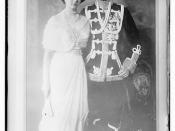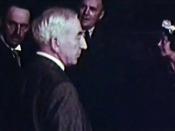SLEAZY, SCANTY, AND PROVOACTIVE"æTHAT'S WHAT GOOD THEATRE IS ABOUT! Sleazy, scanty, promiscuous, provocative, loose. They inspire, but may provoke. They thrill, but sometimes offend. And often the same artwork attracts both acclaim and condemnation. Censorship in the American theatre began shortly after the first colonies were settled. The Puritans who landed in New England had approved of the British restrictions on the drama and had disapproved of the immorality connected with the English theatres. The New Englanders not only considered stage presentations to be a form of pagan worship but also objected to money spent on building theatres. The Dutch who settled in New York and the Quakers who settled in Pennsylvania were also opposed to any form of entertainment. During the early 1900s one will notice that most of censorship has been left to the audiences. However, as our country has progressed and as the judiciary's arms have extended, many censorship issues are being left to the courts.
As one moves toward the early 1900s, censorship is prevalent. The first play in the twentieth century to be closed by the New York police, Clyde Fitch's adaptation of Sapho from the novel by Alphonse Daudet, was produced in February, 1900, starting Olga Nethersole, a seductive actress who sponsored and financed the production (Laufe 62). Miss Nethersole had already shocked audiences by her portrayals of unconventional, immoral women in such plays as Carmen, in which she kissed her leading man full on the lips. The scene soon became known as "The Nethersole Kiss"� or "The Carmen Kiss"� (Laufe 62).
The critics almost unanimously denounced the play. In his editorial in the New York Journal, William Randolph Hearst, who called Sapho an insult to decent women and girls, wrote, "We expect the police to forbid on the stage what they would forbid...


![Ernst Aug[gust] of Brunswick & bride (LOC)](https://s.writework.com/uploads/9/93138/ernst-aug-gust-brunswick-bride-loc-thumb.jpg)